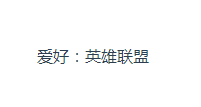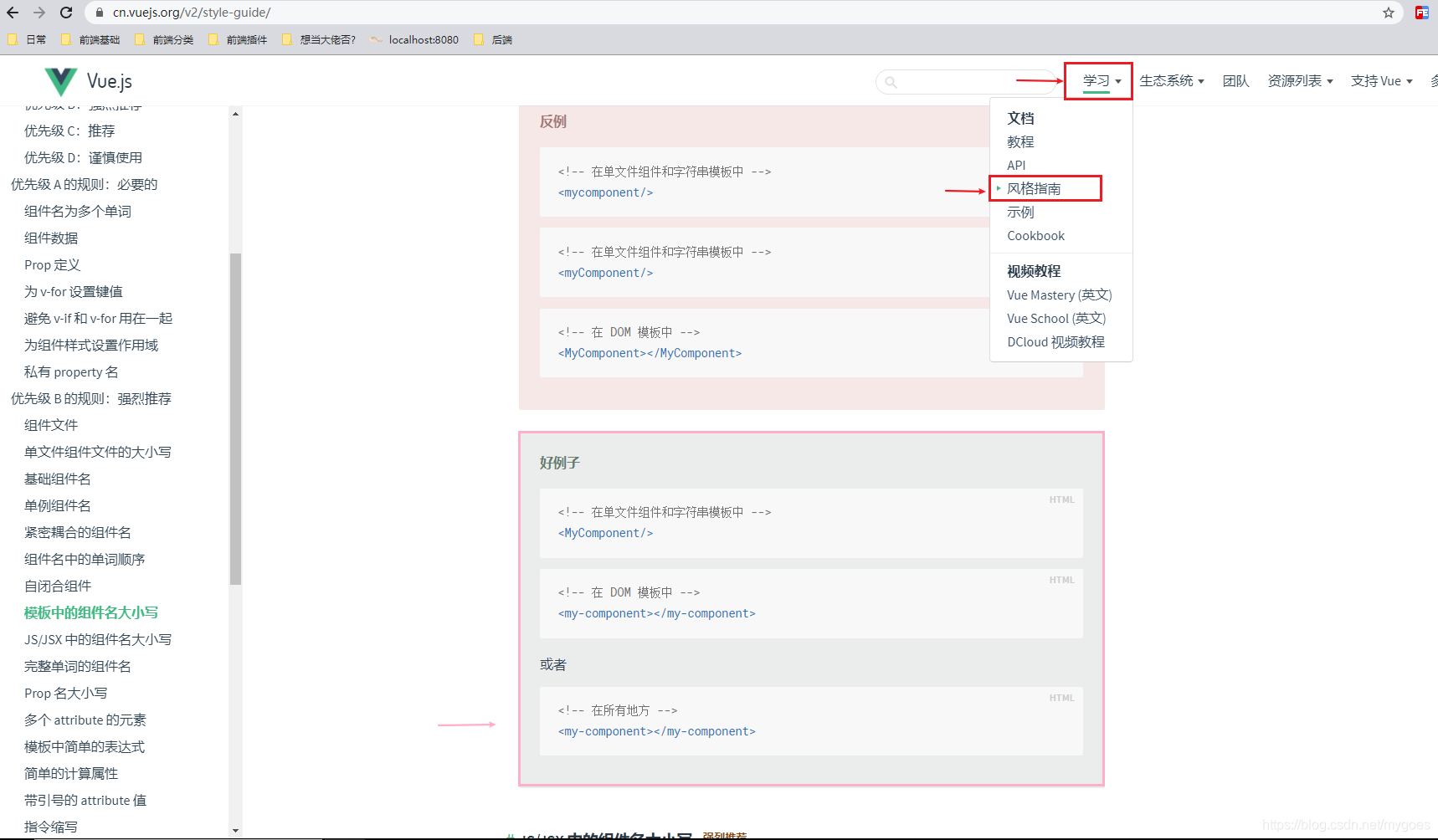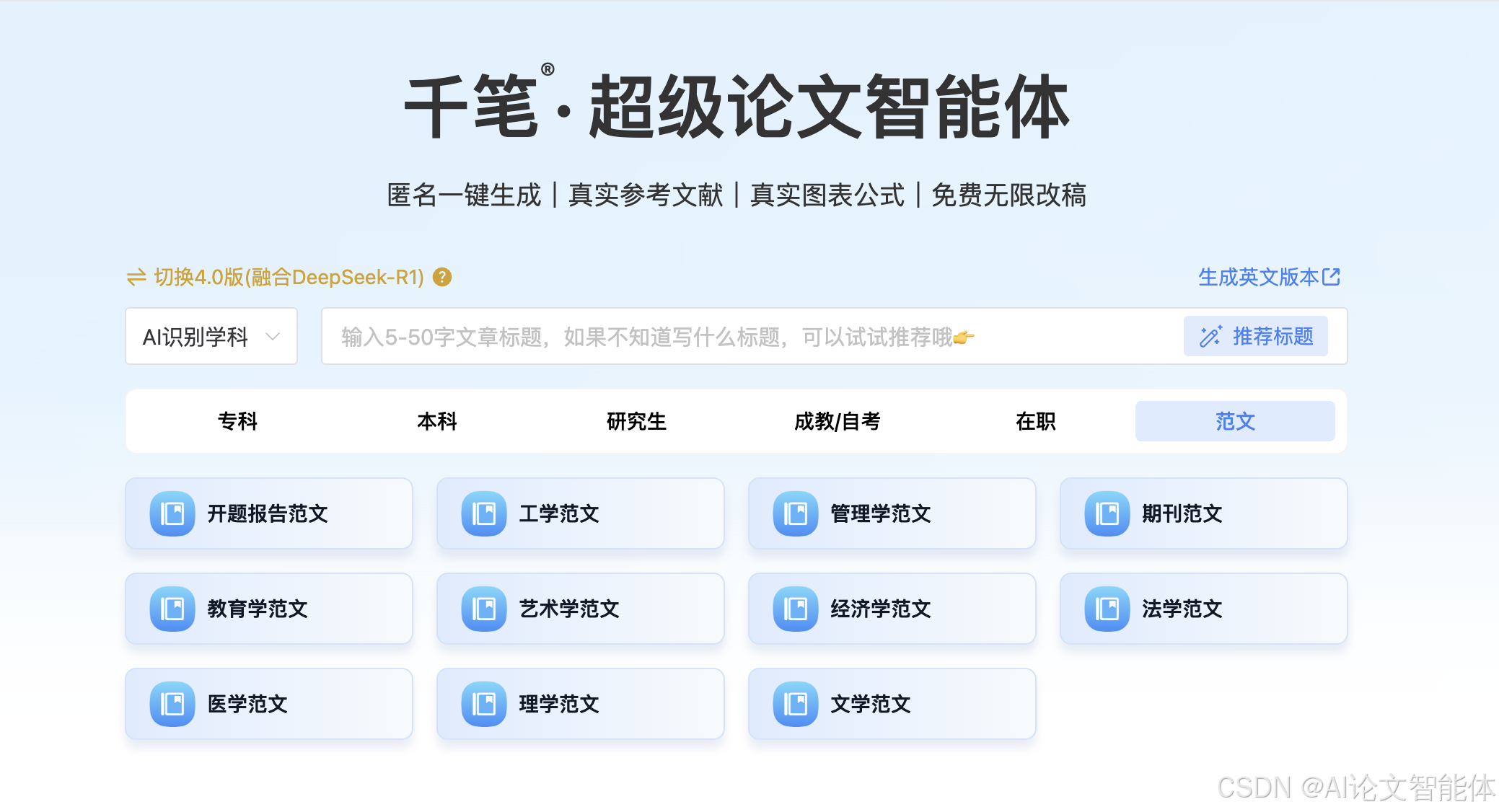父子组件传值
父子组件那些事一. 组件的封装二. 组件的传值props | 父传子ref一. 组件的封装封装:<template><div class="helloWorld">HelloWorld</div></template><script>export default {// 命名name: "HelloWorld",}</script&
父子组件传值
一、Vue 2
一、基本结构
- 子组件:
<template>
<div>子组件</div>
</template>
<script>
export default {
// 命名
name: "HelloWorld",
}
</script>
<style>
</style>
- 父组件:
<template>
<div id="app">
<!-- 3.使用 -->
<hello-world></hello-world>
</div>
</template>
<script>
// 1.导入
import HelloWorld from './components/HelloWorld.vue'
export default {
name: 'App',
// 2.注册
components: {
HelloWorld
},
}
</script>
<style>
</style>
建议大家遵守下 vue代码规范,不遵守的话,打包到线上时,可能会直接报错的哦!

二. 组件的传值
1、props | 父传子
例🌰一: 静态赋值
- 子组件:
<template>
<div class="helloWorld">
<div>姓名:{{ name }}</div>
<div>年龄:{{ age }}</div>
</div>
</template>
<script>
export default {
props: ['name', 'age'],
}
</script>
<style>
</style>
- 父组件:
<template>
<div id="app">
<!-- 3.使用 -->
<hello-world name="阿狸" age="21"></hello-world>
</div>
</template>
<script>
// 1.导入
import HelloWorld from './components/HelloWorld.vue'
export default {
name: 'App',
// 2.注册
components: {
HelloWorld
},
}
</script>
<style>
</style>
页面显示:
例🌰二: 动态赋值 ( 通过 v-bind )
- 子组件:
核心代码:
props:['hobby']
<template>
<div class="helloWorld">
<div>爱好:{{ hobby }}</div>
</div>
</template>
<script>
export default {
props:['hobby'],
},
data() {
return {
hobby:'',
}
},
created() {
// 父组件的值:
console.log( "父组件的值:", this.hobby )
}
</script>
<style>
</style>
- 父组件:
核心代码:
:hobby="要传递的值"
<template>
<div id="app">
<hello-world :hobby="hobby"></hello-world>
</div>
</template>
<script>
import HelloWorld from './components/HelloWorld.vue'
export default {
name: 'App',
components: {
HelloWorld
},
data() {
return {
hobby: '英雄联盟'
}
},
}
</script>
<style>
</style>
页面显示:
例🌰三: 类型校验
- 子组件:
<template>
<div class="helloWorld">
<div>性别:{{ sex?'渣男':'渣女' }}</div>
<div>爱人:{{ love.join(',') }}</div>
</div>
</template>
<script>
export default {
name: "HelloWorld",
props:['hobby'],
}
</script>
<style>
</style>
- 父组件:
<template>
<div id="app">
<!-- 使用这个组件的时候, 数据的传递就不能乱写了哦 -->
<hello-world msg="Welcome to Your Vue.js App" :sex=sex :love=love></hello-world>
</div>
</template>
<script>
import HelloWorld from './components/HelloWorld.vue'
export default {
name: 'App',
components: {
HelloWorld
},
props: {
// 验证规则:
sex: {
type: Boolean,
default: true
},
love: {
type: Array,
default: () => {
return ['迪丽热巴', '鞠婧祎']
}
}
},
data() {
return {
// 数据的传递就不能乱写了
sex: true,
love: ['阿狸', '皎月']
}
},
}
</script>
<style>
</style>
页面显示:
props 验证
1. 可以直接为组件的 prop 属性指定基础的校验类型,从而防止组件的使用者为其绑定错误类型的数据
export default {
props: { // 支持的 8 中基础类型:
propA: String, // 字符串类型
propB: Number, // 数字类型
propC: Boolean, // 布尔值类型
propD: Array, // 数组类型
propE: Object, // 对象类型
propF: Date, // 日期类型
propG: Function, // 函数类型
propH: Symbol // 符号类型
}
}
2. 多个可能的类型
如果某个prop 属性值的类型不唯一,此时可以通过数组的形式,为其指定多个可能的类型:
export default {
props: {
propA: [String, Number], // propA 属性的值可以是“字符串”或“数字”
}
}
3. 必填项校验
如果组件的某个 prop 属性是必填项,必须让组件的使用者为其传递属性的值
export default {
props: {
propB: {
type: String,
required: true
}
}
}
4. 属性默认值
在封装组件时,可以为某个prop 属性 指定默认值
export default {
props: {
propC: {
type: Number,
default: 100
}
}
}
5. 自定义验证函数
在封装组件时,可以为 prop 属性指定自定义的验证函数,从而对 prop 属性的值进行更加精确的控制
export default {
props: {
propD: {
validator(value) {
return ['success', 'warning', 'danger'].indexOf(value) !== -1
}
}
}
}
2、emit | 子传父
- 子组件:
核心代码:
this.$emit("reconfirm", 要传递的值 )
<template>
<div @click="doIt"></div>
</template>
<script>
export default {
methods: {
doIt() {
// 传值给父组件:
this.$emit("reconfirm", "小弟弟!")
},
},
}
</script>
- 父组件:
核心代码:
@reconfirm="reconfirm"
<template>
<div>
<hello-world @reconfirm="reconfirm"></hello-world>
</div>
</template>
<script>
import HelloWorld from './components/HelloWorld.vue'
export default {
components: {
HelloWorld
},
methods:{
// 获取子组件值:
reconfirm(data) {
console.log("子组件值:", data)
},
}
}
</script>
3、综合
父传子:用
props
子传父:用emit
- 父组件:
<developmentInfoEditDialog-switch
:switch-val="switchVal"
@reconfirm="reconfirm"
></developmentInfoEditDialog-switch>
<script>
import PasswordDialog from './PasswordDialog'
import DevelopmentInfoEditDialogSwitch from './DevelopmentInfoEditDialogSwitch'
export default {
components: {
DevelopmentInfoEditDialogSwitch,
},
data(){
switchVal:["我","是","你","爸","爸"],
},
methods: {
// 获取子组件值:
reconfirm(data) {
console.log("子组件传过来的值:"+ data)
},
}
}
</script>
- 子组件:
<script>
export default {
// eslint-disable-next-line vue/require-prop-types
props: ['switchVal'],
created(){
console.log("父组件传过来的值:" + this.switchVal)
}
methods: {
doIPCancel() {
// 传值给父组件:
this.$emit('reconfirm', "我是小弟弟!")
},
},
}
</script>
4、子传父时,父组件自带额外的参数
注意一下父组件中的
$event
子组件:
this.$emit("reconfirm", "哈哈", "嘿嘿");
父组件:
<developmentInfoEditDialog-switch
@reconfirm="reconfirm($event, '嗷嗷~')"
></developmentInfoEditDialog-switch>
// 获取子组件值:
reconfirm(data, info) {
console.log("子组件传过来的值:"+ data)
console.log("父组件自带的值:"+ info)
},

三、provide 和 inject
可以父子传值,还可以祖孙传值
1. 父节点通过 provide 共享数据
父节点的组件可以通过 provide 方法,对其子孙组件共享数据
export default {
data() {
return {
// 1. 定义“父组件”要向“子孙组件”共享的数据
color: 'red'
}
},
provide() { // 2. provide 函数 return 要共享的数据
return {
color: this.color,
}
}
}
2. 子孙节点通过inject接收数据
子孙节点可以使用 inject 数组,接收父级节点向下共享的数据
<template>
<h5>子孙组件 {{color}}</h5>
</template>
<script>
export default {
inject: ['color']
}
</script>
3. 父节点对外共享响应式的数据
父节点使用 provide 向下共享数据时,可以结合 computed 函数向下共享响应式的数据
import { computed } from 'vue'
export default {
data() {
return {
color: 'red'
}
},
provide() {
return {
// 使用 computed 函数,可以把要共享的数据包装为响应式的数据
color: computed(()=> this.color)
}
}
}
4. 子孙节点使用响应式的数据
如果父级节点共享的是响应式的数据,则子孙节点必须以 .value 的形式进行使用
<template>
<!-- 响应式的数据,必须以 .value 的形式进行使用 -->
<h5>子孙组件 {{color.value}}</h5>
</template>
<script>
export default {
inject: ['color']
}
</script>
ref
- 父组件中用
this.$refs.子组件ref的值,等于进入子组件中并调用了子组件的this。 - 子组件中用
this.$parent,等于进入父组件并调用了父组件的this。 - 同一个组件中,可以给 DOM 节点加
ref='值',并通过this.$refs.值操作此节点。
🌰子:
子组件:
<template>
<div class="HelloWorld">
<p ref="infoP_son">{{info}}</p>
<button @click ="btnClick">子组件中获取父组件</button>
<!-- 渲染父组件的信息到页面 -->
<p>{{getInfo}}</p>
</div>
</template>
<script>
export default {
name: "HelloWorld",
data() {
return {
info:"子组件",
message:"来自子组件的数据",
getInfo:''
};
},
components: {},
created() {},
mounted() {},
methods: {
btnClick(){
this.getInfo += this.$parent.message
}
}
};
</script>
<style lang='less' scoped>
.HelloWorld{
background-color: red;
}
</style>
父组件:
<template>
<div class="App">
<p class="info" ref="infoP">{{info}}</p>
<HelloWorld ref="HelloWorld"></HelloWorld>
<button @click="btnClick">父组件中获取子组件</button>
<!-- 渲染子组件的信息到页面 -->
<p>{{getInfo}}</p>
</div>
</template>
<script>
import HelloWorld from "./components/HelloWorld";
export default {
name: "App",
data() {
return {
info: "父组件",
message:"来自父组件的信息",
getInfo:''
};
},
components: {
HelloWorld
},
created() {},
mounted() {
// ref 疯狂操作 DOM
this.$refs.infoP.style.color = 'pink'
this.$refs.infoP.style.fontSize = '28px'
this.$refs.HelloWorld.$refs.infoP_son.style.color = '#599eff'
this.$refs.HelloWorld.$refs.infoP_son.style.fontSize = '28px'
},
methods: {
btnClick() {
// 获取子组件的信息
this.getInfo += this.$refs.HelloWorld.message;
window.console.log(this.$refs.HelloWorld.message);
}
}
};
</script>
<style lang='less' scoped>
.App {
background-color: greenyellow;
}
</style>

你可能需要:react 组件间的传值。

二、Vue 3
父传子 defineProps
需求:父组件传值给子组件;且在子组件调用父组件中的方法。
父组件:
<template>
<UserDialog :objValue="objValue" @refresh="refresh"></UserDialog>
</template>
<script lang="ts" setup>
import { reactive } from "vue";
import UserDialog from "./components/userDialog.vue";
interface ITable{
username: string;
phone: string;
}
const objValue= reactive<ITable>({
username: "",
phone: "",
});
const refresh = (value: string) => {
console.log("...", value)
}
</script>
子组件:
<template>
<div>{{ objValue }}</div>
<div @click="doRefresh">点击调用父组件的 refresh 方法</div>
</template>
<script lang="ts" setup>
import { ref, defineProps, toRefs, defineEmits } from "vue"; // 导入相关模块
const props = defineProps({
objValue: {
type: Object,
default: {},
},
}); // 1.1.定义父组件传过来的数据的类型
const { objValue } = toRefs(props); // 1.2.接收父组件传过来的数据 objValue
const try = () => {
const value: any = props.objValue; // 1.3.使用父组件传过来的数据 objValue
console.log("...", value)
}
const emit = defineEmits(["refresh"]);
const doRefresh = () => {
emit("refresh", "hello"); // 调用父组件的 refresh 方法,同时传参 hello
};
</script>
父传子孙 provide & inject
父组件:
<template>
<div>{{ username }}</div>
<div @click="add">改名啦</div>
</template>
<script lang="ts" setup>
import { ref, provide } from "vue";
const username = ref<string>("");
provide("username", username); // 传值给子组件
const add= () => {
username.value = "小三";
};
</script>
子组件:
<template>
<div>{{ username }}</div>
</template>
<script lang="ts" setup>
import { inject } from "vue";
const username : any = inject("username "); // 接收父级组件传的数据
</script>
更多推荐
 已为社区贡献2条内容
已为社区贡献2条内容








所有评论(0)